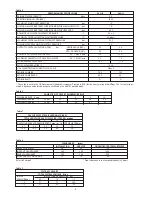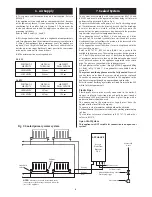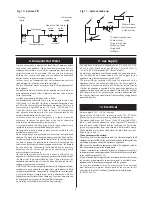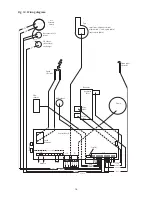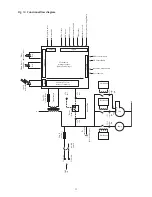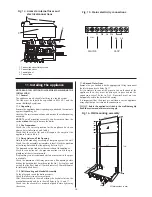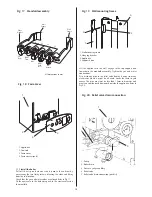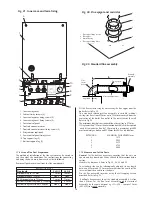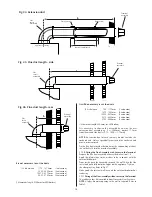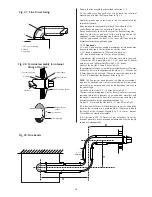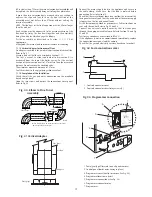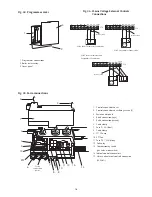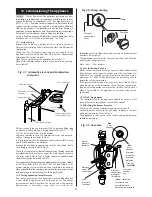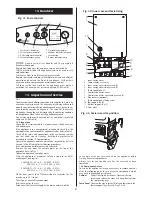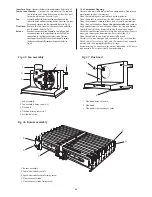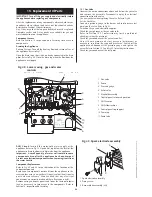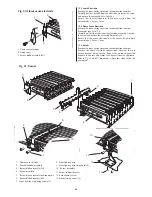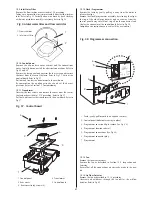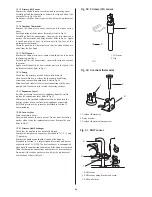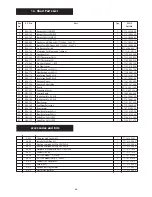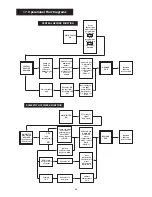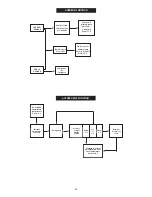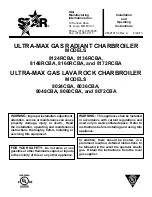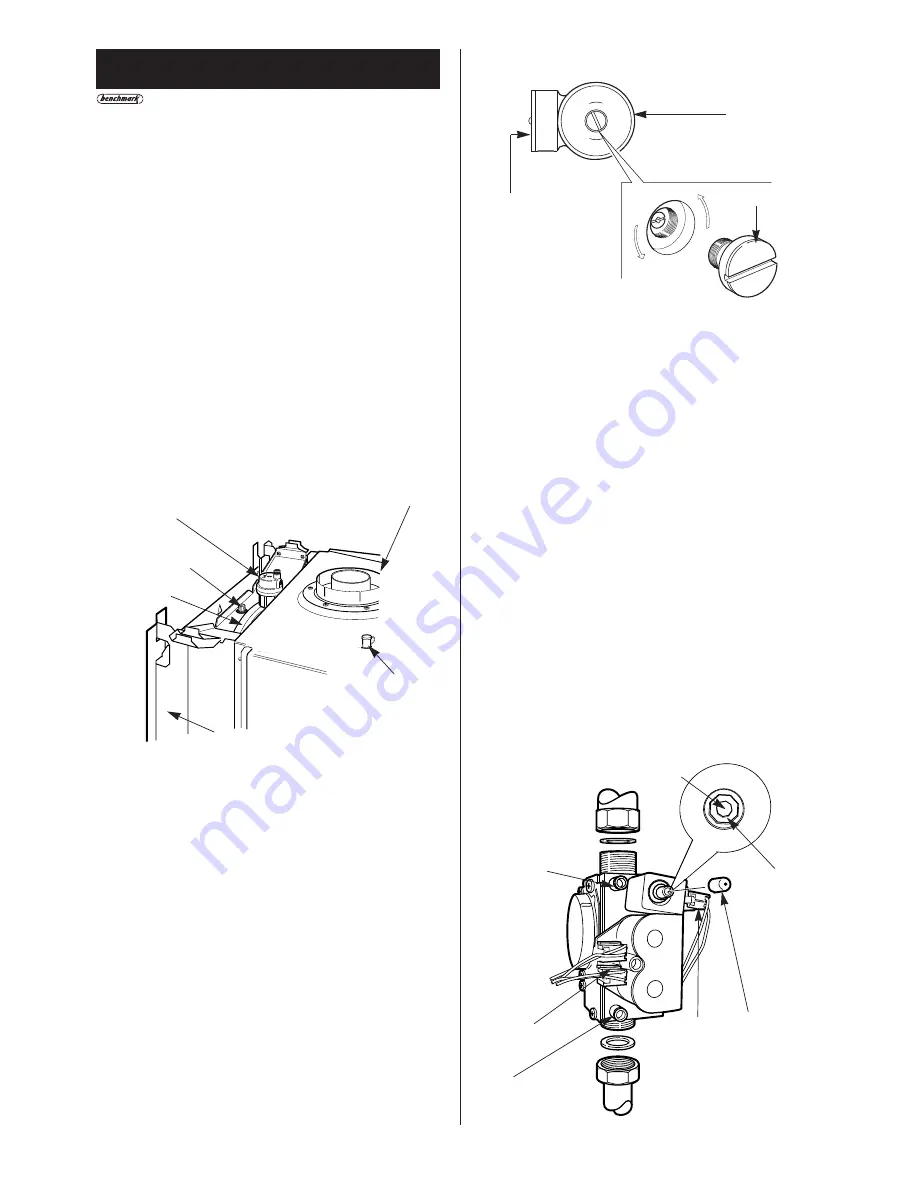
Water Treatment: For optimum performance after
installation, this boiler and its associated central heating system
should be flushed in accordance with the guidelines given in
BS7593: 1992 – Treatment of water in domestic hot water heating
systems. Full instructions are supplied with proprietary cleansers
sold for this purpose. If an inhibitor is to be used after flushing, it
should be used in accordance with the manufacturers instructions.
Remove all system cleanser before adding any inhibitor.
Suitable flushing agents and inhibitors are available from Betz
Dearborn on 0151 4209563 or Fernox on 01799 550811.
12.1 System Set up
Remove the cabinet by pulling off the clip-on facia cover.
Unscrew the two fixing screws, release the sides and lift from the
top location.
Check that the electrical supply and the gas supply to the
appliance are turned off and that all the water connections
throughout the system are tight.
Open the system valves at the appliance. Refer to Fig 17.
Open all the radiator valves. Remove the automatic air vent cap.
Refer to Fig 37.
Fill the system through an external WRAS approved filling loop
or Worcester Filling Link and Key optional extra, Part N
o
: 7 716
192 281. Refer to Section 7, Sealed System.
Vent each radiator in turn. The automatic air vent, cap removed,
will vent the appliance. Refer to Fig 37.
It is very imortant that the appliance and system are fully vented
and that all air pockets are removed.
Remove the cap from the pump and turn the shaft about half a
turn. Replace the cap. Refer to Fig 38.
Check that the pressure relief valve operates by turning the knob
anti-clockwise until it releases. Lower the facia to gain access to
the relief valve. Refer to Fig 20. Water should be expelled from
the discharge pipe. Refer also to Fig 54.
The appliance [as despatched] can accommodate a system volume
of 100 litres. Refer to BS7074 Part 1, BS5449 and Table 8. If the
system volume is greater then an extra vessel must be fitted as
close as possible to the appliance central heating return connection
and pressurised to the same figure as the integral vessel.
12.2 Set the Expansion Vessel Pressure
The charge pressure of the expansion vessel as dispatched is
0.5bar, which is equivalent to a static head of 5m. The charge
pressure must not be less than the static head at the point of
connection. A Schraeder type valve is fitted to the
expansion vessel to allow the charge pressure to be increased if
necessary. Refer to Fig 37.
The expansion vessel must be charged to 0.35bar less than the
initial system design pressure.
Note: 1bar = 10.2m of water.
12.3 Set the System Pressure
Fill the system until the pressure gauge is at 2.5bar and check for
leaks. Release water from the system using the relief valve test
knob until the required system pressure is obtained, upto a
maximum of 1.5bar. Set the pointer on the pressure gauge to
record the set system pressure.
If the pressure indicated on the gauge is greater than 2.65bar
when operating at the maximum central heating temperature
then an extra expansion vessel must be fitted to the system as
close as possible to the appliance central heating return
connection.
12.4 Clock/Programmer
The controls fitted to the appliance should be set up at this
stage. Refer to the instructions sent with the control.
12.5 Checking the Burner Pressure
Check that the gas and electricity supplies are turned off.
Connect pressure gauges to the gas valve to measure the inlet
and burner pressures. Refer to Fig 39.
The appliance is fully set up in the factory and no adjustment
should be necessary.
12. Commissioning The Appliance
19
Fig. 37. Automatic air vent and combustion
test point
Fig. 38. Pump venting.
Pump
Pump
cap
Electrical
connections
cover
Fig. 39. Gas valve.
Automatic air vent
Flue connections
Expansion vessel charg-
ing point
Expansion vessel
Wall mounting frame
Combustion products
test point (front cap)
Max
2mm
Allen key
Min
3mm
Allen key
Gas valve
sealing
cap
Burner
pressure
test point
Electrical
connections
modulator
(Blue:Blue)
Minimum /
Maximum
pressure
adjuster -
Allen key*
(see
Note
)
Inlet
pressure
test point
Main gas
valve
connections
*Note:
Clockwise
to increase and
anti-clockwise to
decrease the pressure.

